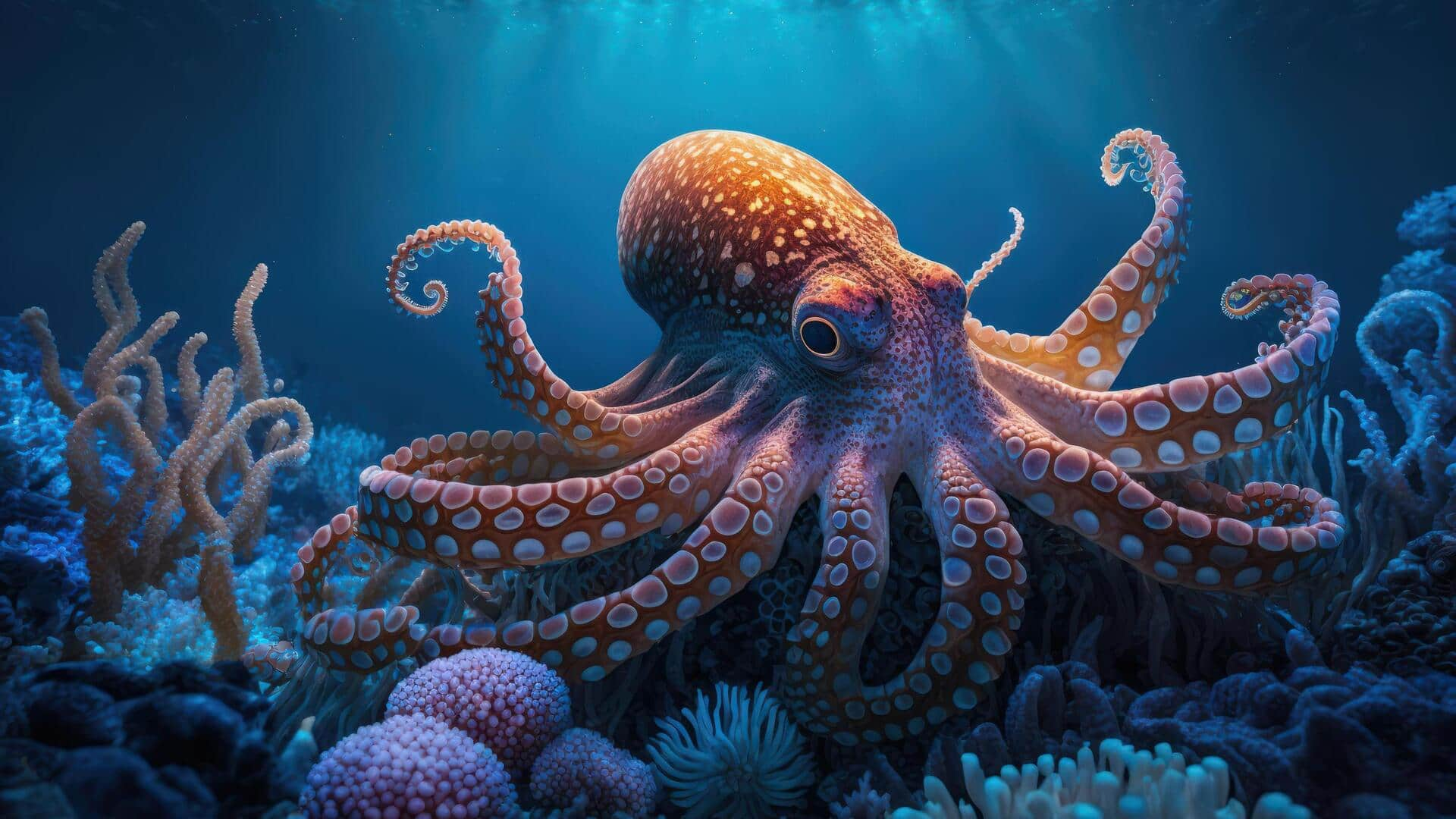
Octopus' color-changing ability consumes energy equivalent to your 25-minute jog
What's the story
Octopuses are famous for their incredible ability to change color in an instant, a skill they employ for both hunting and avoiding predators. The energy cost of this unique form of camouflage has long remained a mystery in the scientific community. However, new research has finally revealed the metabolic cost of these full-body color transformations, providing new insights into octopus biology.
Energy expenditure
Energy trade-offs of octopus camouflage
While the benefits of an octopus' color-changing abilities are well-documented, the energy costs have largely remained unknown until now. This new understanding of the metabolic expense sheds light on the trade-offs octopuses make to stay hidden. "This new understanding of the metabolic expense of color change offers insights into the trade-offs octopuses make to remain concealed," explained Kirt Onthank, a marine biologist and biology professor at Walla Walla University in Washington DC.
Chromatophores
The science behind octopuses color change
Octopuses have specialized skin organs called chromatophores. These tiny pigment sacs are attached to muscle fibers that work like spokes on a wheel. When muscles relax, the pigment sacs shrink to nearly invisible points. When they contract, they expand the sacs, spreading the pigment across the skin, revealing color. Each chromatophore acts like a tiny pixel on a screen with octopuses boasting an impressive 230 chromatophores per square millimeter of skin—far exceeding pixel density on a 4K 13-inch laptop monitor.
Research findings
Study reveals high energy consumption of octopus camouflage
A recent study, led by Onthank and lead author Sofie Sonner, examined the energy costs of color changes in octopuses. The researchers analyzed skin samples from 17 ruby octopuses. They found that fully changing color took an average of 219 micromoles of oxygen per hour—equal to the energy the octopus uses for all its other bodily functions while at rest.
Information
Humans would burn extra 390 calories daily for this task
After examining the energy costs, Onthank scaled their findings to human size, estimating that if humans had color-changing octopus skin, we'd burn an additional 390 calories daily—about the equivalent of a 23-minute run.